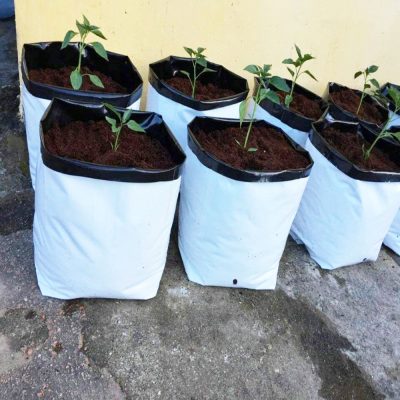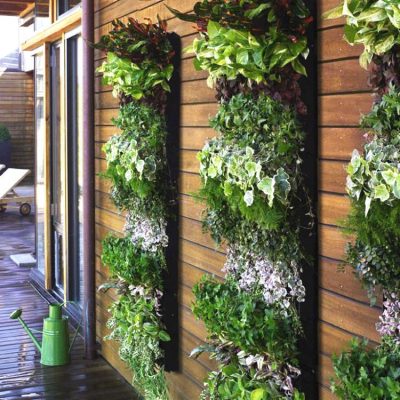Planting in hanging grow bags can be a convenient and space-saving solution for gardening. Here are some tips and techniques to ensure successful planting in hanging grow bags:
- Choose the Right Size and Material: Select hanging grow bags that are suitable for the specific plant you want to grow. Consider the size of the plant’s root system and choose a bag with enough capacity to accommodate it. Additionally, opt for high-quality, breathable materials that promote proper drainage and aeration.
- Properly Position the Grow Bags: Hang the grow bags in a location that receives adequate sunlight for the specific plant’s needs. Ensure the bags are securely fastened to a sturdy support structure or hooks that can bear the weight of the soil and plant.
- Select the Right Soil Mix: Use a well-draining soil mix specifically formulated for container gardening. Avoid using heavy garden soil, as it can become compacted and hinder root growth. Consider adding organic matter or compost to enhance the soil’s fertility and water-holding capacity.
- Preparing the Grow Bag: Before planting, make small drainage holes in the bottom of the grow bag if they aren’t already present. This helps prevent waterlogging and promotes healthy root development. Additionally, consider lining the grow bag with a layer of landscape fabric or a coffee filter to prevent soil from washing out while allowing water drainage.
- Planting Technique: Fill the grow bag with the prepared soil mix, leaving some space at the top to accommodate watering. Gently firm the soil and create a small hole in the center for the plant. Carefully remove the plant from its container and place it in the hole, ensuring the root ball is level with or slightly above the soil surface. Backfill the hole with soil, gently firming it around the roots.
- Watering and Fertilizing: Water the newly planted grow bag thoroughly to settle the soil and ensure good root-to-soil contact. Monitor the moisture level and water the grow bag regularly, taking care not to overwater or allow the soil to dry out completely. Apply a balanced fertilizer or a slow-release fertilizer according to the specific plant’s needs.
- Pruning and Training: Depending on the type of plant you’re growing, consider pruning or training techniques to promote compact growth and prevent the plant from becoming too leggy. Pinch back or trim excessive growth as needed to maintain shape and encourage branching.
- Regular Maintenance: Monitor the plants for signs of pests, diseases, or nutrient deficiencies. Take appropriate measures to address any issues promptly. Regularly remove any dead or damaged foliage to promote healthy growth.
- Adjusting Position and Support: As the plant grows, adjust the position of the grow bag and provide additional support if necessary. Ensure the plant remains properly balanced and doesn’t become too top-heavy.
- Harvesting and Renewal: Harvest the fruits, vegetables, or herbs when they reach maturity. After harvesting, you can either replant the grow bag with new crops or rejuvenate the soil by amending it with fresh compost or organic matter.
By following these tips and techniques, you can maximize the potential of your hanging grow bags and enjoy a successful and productive garden. Remember to provide proper care and attention to the plants throughout their growing season.








